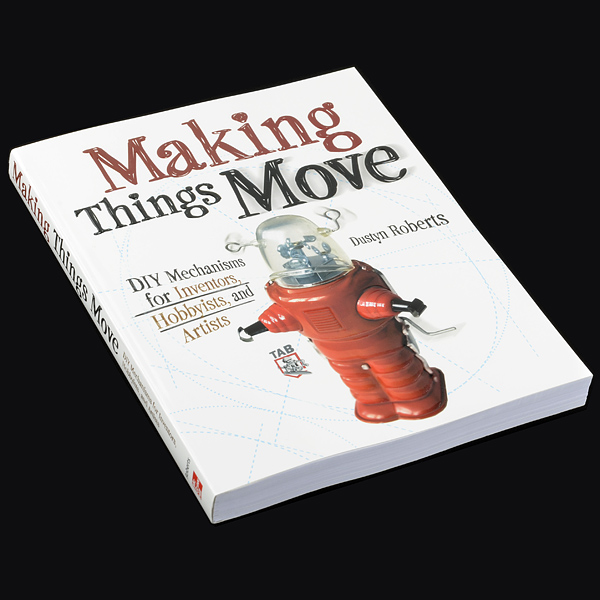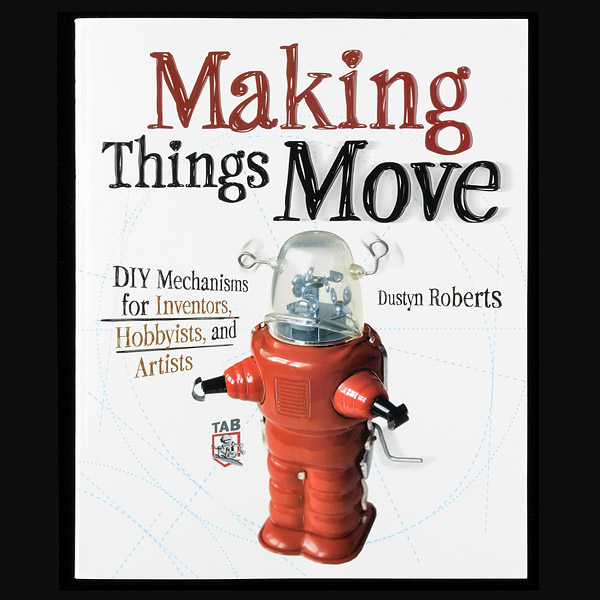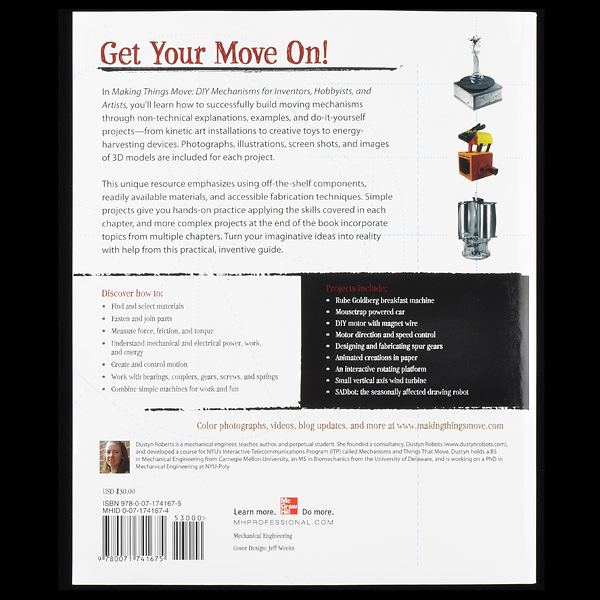Making Things Move
Dustyn Roberts' Making Things Move is a wonderful introduction to practical mechanics. This book teaches you the basics of building moving mechanisms through non-technical explanation, not abstract engineering theory. These straight-forward explanations, together with examples and DIY projects, will help you form a solid understanding of concepts like attaching couplers and shafts to a motor or converting rotary motion to linear motion. Jam-packed with pictures, drawings, screenshots, and down-to-Earth instruction, *Making Things Move *focuses on practical application with an emphasis on readily available parts, materials and processes.
Info:
- Author: Dustyn Roberts
- Publisher: McGraw-Hill / TAB Electronics
- Paperback: 368 pages
- ISBN 10: 0-0717-4167-4
- ISBN 13: 978-0-0717-4167-5
- Practical and easy-to-understand explanations.
- Discussions on modern fabrication processes such as Laser-cutting and 3D printing, and how to access them.
- Over a dozen topic-focused projects and three broad-scale projects incorporating lessons form the whole book.
- Shopping lists and off-the-shelf component guides for DIY projects.
- Includes online component for continuing education with the book's companion website and blog.
Making Things Move Product Help and Resources
Core Skill: Robotics
This skill concerns mechanical and robotics knowledge. You may need to know how mechanical parts interact, how motors work, or how to use motor drivers and controllers.
Skill Level: Rookie - You will be required to know some basics about motors, basic motor drivers and how simple robotic motion can be accomplished.
See all skill levels
Core Skill: Programming
If a board needs code or communicates somehow, you're going to need to know how to program or interface with it. The programming skill is all about communication and code.
Skill Level: Rookie - You will need a better fundamental understand of what code is, and how it works. You will be using beginner-level software and development tools like Arduino. You will be dealing directly with code, but numerous examples and libraries are available. Sensors or shields will communicate with serial or TTL.
See all skill levels
Comments
Looking for answers to technical questions?
We welcome your comments and suggestions below. However, if you are looking for solutions to technical questions please see our Technical Assistance page.
Customer Reviews
No reviews yet.




ASCII version -- HA!
This book is really good at hobbist mechanics. I have lots of robotics and electronics and this is the thinnest and the most interesting one. The book even has information I have not found in internet!